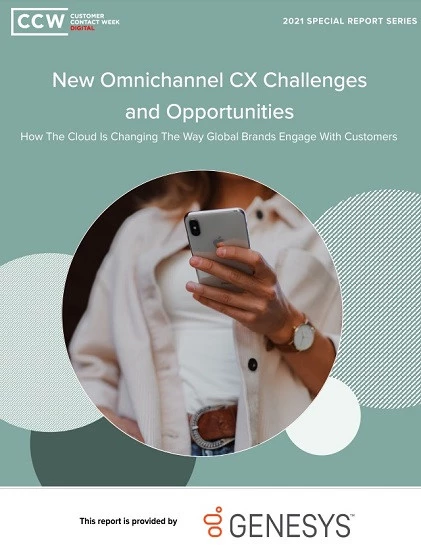Companies, It Turns Out, Have NOT Really "Gone Social"
Add bookmarkWhen no one hears a tree fall in the middle of the forest, it is fair to wonder whether the tree actually fell.
So when companies establish presences on Twitter and Facebook but then fail to interact with their customers, is it not similarly fair to doubt whether they have actually "gone social?"
When it comes to actual customer communication on social media, the latest of a string of studies on the subject might be the most troubling to date. AT Kearney’s 2ndAnnual Social Media Survey, released this past month, confirms that of the top 50 brands (measured by Interbrand), only a handful focus on two-way communication, and 27 did not respond to a single customer reply in the measured period.
[eventPDF]
Despite all the emphasis on transforming social media into a relationship tool rather than a mere announcement board, AT Kearney’s Jim Singer notes, "The majority of companies we looked at are not moving toward a more interactive use of social media, even as their customers are becoming clearer about their expectation to interact with their brands."
Present evidence is admittedly murky over the extent of the demand for full-fledged customer service on social channels. But evidence of the demand for interaction is decidedly clear, and companies therefore cannot hide behind the "our customers don’t want to talk to us" excuse for anti-social behavior on social media.
According to the study, of the 48-out-of-50 top brands who maintain a Facebook page, 94% land their users on a one-way communication page (either a company-created tab or a company-only wall). While this practice likely stems from a universal sense of old-world pragmatism (why would we risk directing customers to a page with "wildcard" customer content?), it seems quite surprising that so many organizations are ignoring what has been revered as a key tenet of social media: that users, not simply employees and brand PR reps, get to drive the discussion.
Particularly shocking: even though social customer engagement spent the past year as an even more-aggressively hyped "mission-critical" business objective, the "one-way communication" figure actually increased slightly, moving from 91% last year to 94% this year.
When the Four Seasons hotel group announced its plans this month to syndicate social content—including that from networks outside of its control—on its official website, there seemed to be a surprising disconnect between journalists and customer management professionals. Journalists used terms like "bold bet" to describe the initiative, while the customer management reaction was more of the "so…what" variety.
After all, these reviews are already out there, and on networks more-frequently accessed by the target audience than the hotel chain’s official website. Why even bother trying to downplay the existence of such content, negative or positive?
As it turns out, the journalist reaction was more appropriate in this current state of social media. The AT Kearney study confirms that 38 of the 48 brands restrict their walls to accepting (or at least displaying) company-only chatter, while only one allows for unfiltered conversation flow.
One.
Yes, in this era of relationship-driven customer management and a supposedly-transparent, "social" flow of information and response between brands, customers and non-customers, only one of the top 50 brands is actually game to put the "social" in social media. No matter how much companies claim they are embracing the unfiltered, "anyone can voice his opinion" nature of social media, most are actually running scared and thus counter to the very notion of the channel.
As noted, 27 of the brands did not respond to a single customer comment on Facebook. And it is not as if the remaining brands were vastly superior: only four—Toyota, Citi, General Motors and American Express—responded to more than a quarter of customer replies.
Beyond missing out on the opportunity to engage customers with a welcome reply, these brands are also squandering the chance to attract those who are observing the interactions. Of the four basic types of corporate correspondence on social—personal, non-promotional customer interactions, promotional interactions, informative postings and external links—customers significantly prefer personal interactions. They, in fact, like personal postings two-and-a-half times more frequently than the other three forms of communication combined.
"Getting consumers to put themselves on the line invests them in a brand -- whether they 'like' it or hate it, they are committing to an opinion. And that's what companies need to sit up and take notice of, though it seems that all too often, they don't," says Singer.
Sadly, only 13% of the measured interactions fell into that "personal" classification; 61% were either promotional messages or off-Facebook links.
A baseball player cannot hit a home run unless he swings the bat. A runner cannot win a race unless he moves forward. How, then, can customer management professionals expect to reap the rewards of social media without actually seizing the social engagement opportunity?
Make no mistake—much of social remains unproven. We still do not know the extent to which customers will value "customer service" on online networks. We still do not know whether the acquisition of social "followers" will leave a notable footprint on the bottom line (we similarly do not know that social will ever live up to the hype regarding lead generation).
But from AT Kearney’s study—and common sense—we do know that social media represents a ripe opportunity to engage customers and establish real relationships. We know it represents an opportunity to make a customer feel valued, while simultaneously extracting valuable insights from that customer.
For nearly all of the most successful brands, those opportunities are being overlooked by strategists who have mistaken setting up a social media profile for "going social."













